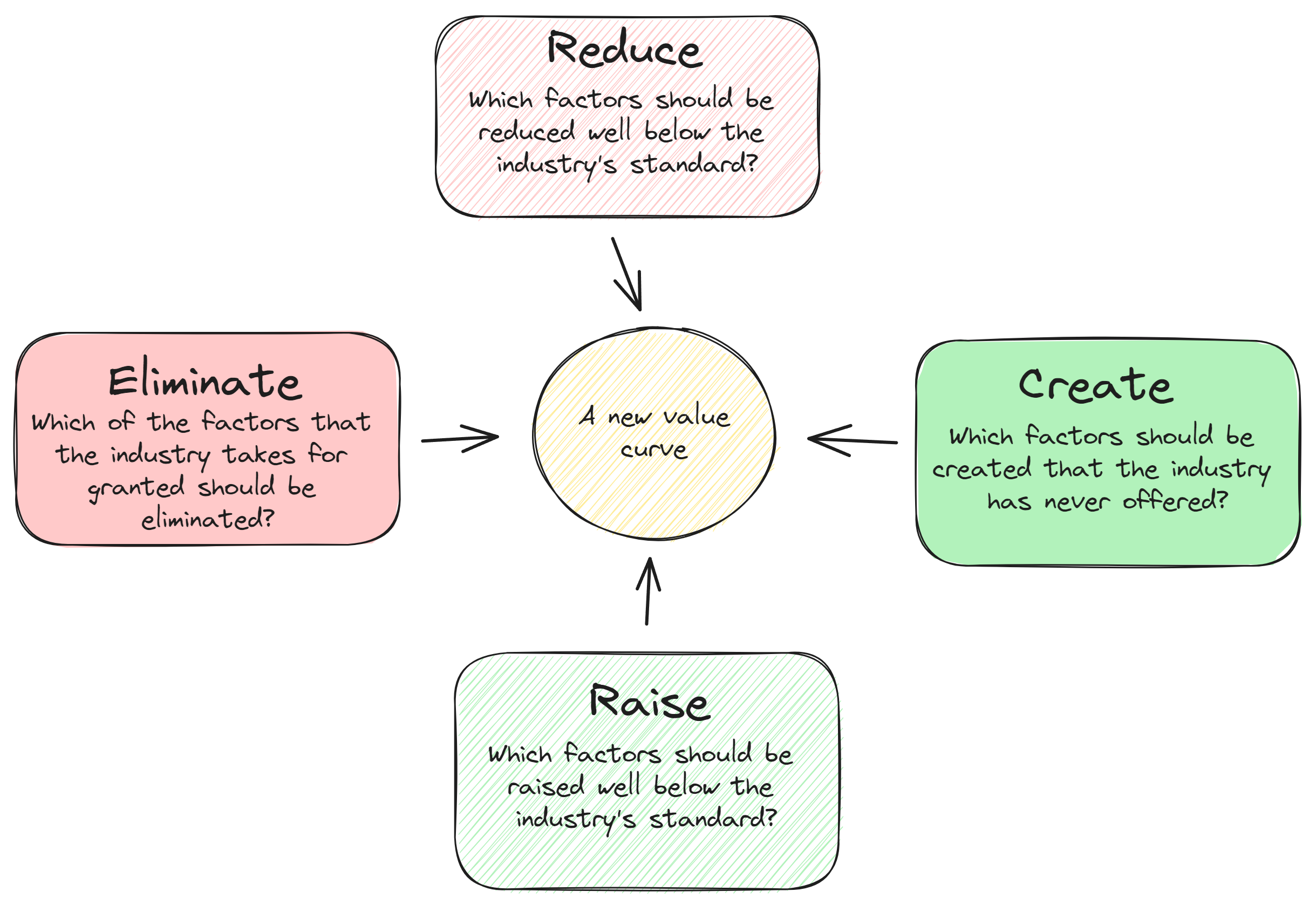The Blue Ocean Strategy - Notes and Summary
📅
•🔖booknotes, business
The four actions framework

- Eliminate & Reduces: Provides insight into how to drop the cost structure
- Create & Raise: Provides insight into how to lift buyer value and create new demand
Three Characteristics of a Good Strategy
- Focus - Aim
- Divergence
- Stand apart
- Inconsiderate of Competition
- Compelling Tagline
What happens when the following characteristics aren’t a part of the strategy?
When lacks
- focus: It’s cost structure will tend to be high and its business model complex in implementation and execution
- divergence: company’s strategy is “me-to”, with no reason to stand apart in the marketplace
- compelling tagline: No natural take-off capability and doesn’t provide the expected ROI.
Paths for Creating Blue Oceans
-
Look Across Alternative Industries
-
Products or services that have different forms but offer the same functionally or core utility.
eg: Pen and Pencil being alternate for a Brainstorming app. -
What are the alternative industries to your industry? Why do customers trade across them? By focusing on the key factors that lead buyers to trade across alternative industries and eliminating or reducing everything else, you can create a blue ocean of new market space.
-
-
Look Across Strategic Groups within Industries
- Price and Performance.
- What ar ethe strategic groups in your industry? Why do customers trade up for the higher group, and why do they trade down for the lower one?
-
Look Across the Chain of Buyers
- What buyer goup does your industry typically focus on? if you shifted that buyer group of your industry, how could you unlock new value?
-
Look Across Complementary Product and Service Offerings
- Untapped value is often hidden in complemnentary products and services. They is to define the total solution buyers seek when they choose a produc or service. A Simple way to do so is to think wbout what happens before, during, and after you product is used.
- eg: Ease and cost of getting a baby sitter and parking the car affect the perceieved avlu of giong to the moveis.
- What is the context in which you product or service is used? what happens before, during, and after? Can you identify the pain points? How can you eleiminate these pain points through a complementary product or service offering?
-
Look Across Functional or Emotional Appeal to Buyers
- Does your industry compete on functionality or emotional apeal? if you compete on emotion appeal, what elements can youstrip out to make it functinal? If you compete on Functionality what elements can be added to make it emotional?
-
Look Across Time
- From the value a market delivers today to the value it might deliver tomorrow.
- What treands have a high probablity of impacting you industry, are irreverisble, and are evoling in a clear trajectory? How will these trends impact your industry? Given this, how can you open up unprecedented customer utitlity.